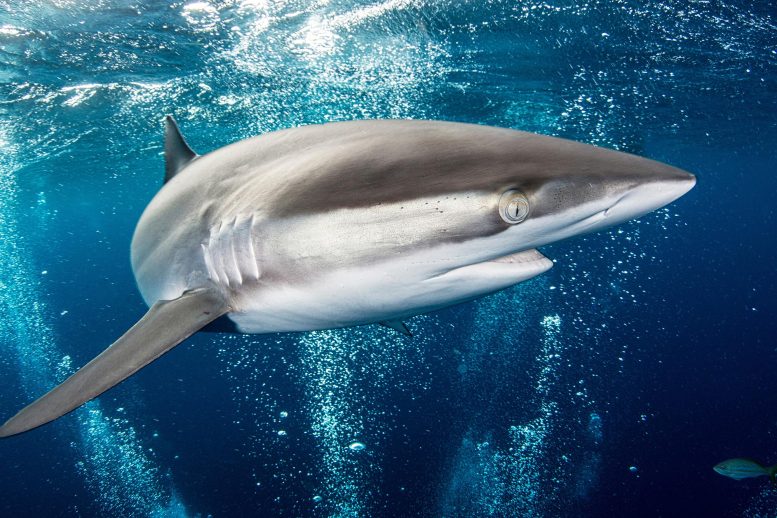
Researchers documented the longest migration of a silky shark, highlighting its extensive travel in international waters and emphasizing the need for global cooperation in shark conservation. The study showcases the urgency of establishing regulations to protect ocean biodiversity and manage the threats faced by these long-traveling sharks.
Researchers documented the longest recorded migration of a silky shark, uncovering critical conservation gaps that need immediate attention.
In a recent study, scientists have documented the most extensive migration ever recorded for a silky shark (Carcharhinus falciformis), traveling over 27,666 kilometers in 546 days. Their research reveals critical insights into the behavior of this severely overfished species and underscores the urgent need for cooperative international management measures to prevent further population declines.
This study, published in the Journal of Fish Biology, was conducted by researchers from the Charles Darwin Foundation (CDF), the Guy Harvey Research Institute (GHRI) and Save Our Seas Foundation Shark Research Center (SOSF-SRC) at Nova Southeastern University in Florida, and the Galapagos National Park Directorate (GNPD).
The Epic Journey of ‘Genie’
The adult female silky shark, named ‘Genie’ in honor of the late shark ecologist Dr. Eugenie Clark, was tagged with a fin-mount satellite transmitter near Wolf Island in the Galapagos Marine Reserve in July 2021. Genie embarked on a vast journey, traveling over 27,666 kilometers (17,191 miles) in 546 days. Her journey, equivalent to crossing the United States coast to coast about four times, included two significant westerly migrations (halfway to Hawaii) extending as far as 4,755 kilometers (2,955 miles) from the tagging site into international waters, where fishing pressure is high and regulation is minimal.
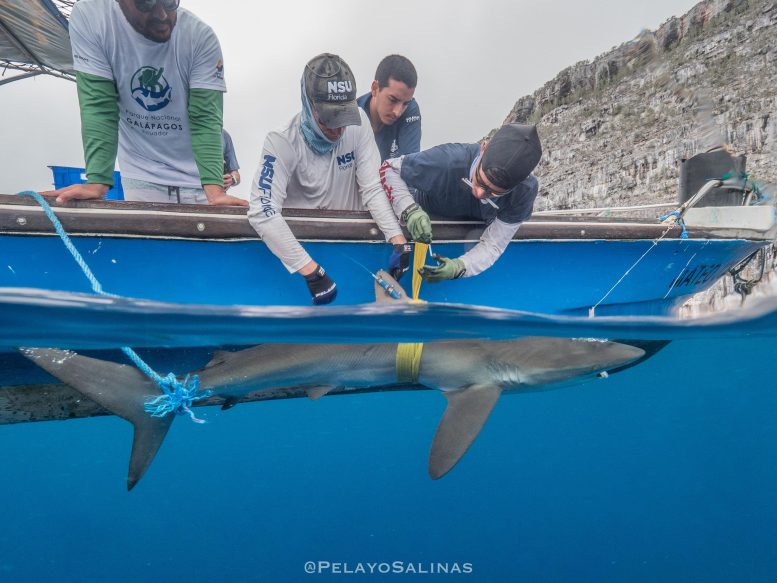
Time is the essence. Researchers deploy a fin-mounted satellite tag on a silky shark to track her movements in almost real time, a procedure that is completed in around 5 minutes. Credit: Pelayo Salinas de León
Record-Breaking Migration Demonstrates Need for International Regulation
This study broke the previous movement record by almost six times and demonstrated the shark’s extensive use of the open ocean beyond national jurisdictions. This underscores the urgent need for regulations to conserve ocean biodiversity beyond national borders.
Dr. Pelayo Salinas de León, lead author of the study and co-Principal Investigator of the shark ecology project at the Charles Darwin Foundation noted: “Understanding the migratory pathways of silky and other threatened pelagic sharks is crucial for developing effective management strategies to revert ongoing global population declines. Sharks have been roaming the world’s oceans for hundreds of millions of years and the map boundaries we humans have established on paper mean nothing to them. Their long migrations through heavily fished international waters expose them to significant risks, highlighting the need for a coordinated global response to ensure the survival of this highly threatened group of species.”
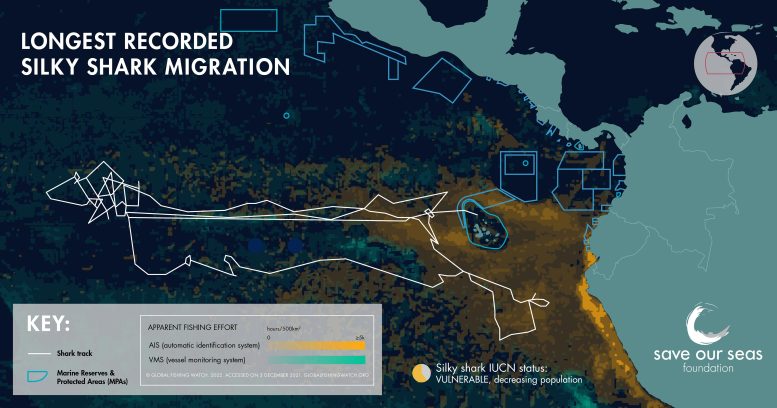
Ocean travelers. Estimated locations for ‘Genie’ from her tagging location at Wolf Island, the Galapagos Marine Reserve, with a fin-mount SPOT tag and tracked for 546 days. Credit: Save Our Seas Foundation
Vulnerability of Silky Sharks
Silky sharks are particularly vulnerable to overfishing due to their slow growth, late maturity, and the high demand in the global shark fin trade. Classified as Vulnerable on the IUCN Red List of Threatened Species, they represent one of the most frequently caught sharks in both artisanal and industrial fisheries and are a conservation priority for CDF and other organizations.
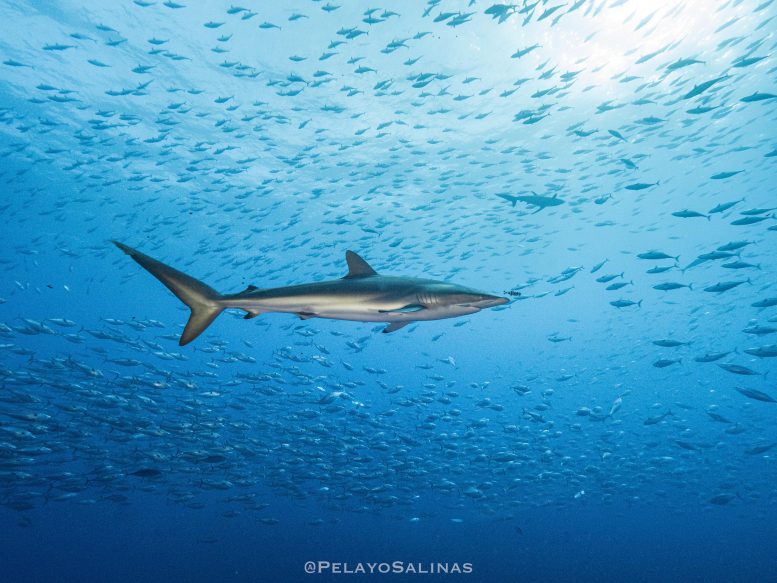
A threatened species. The tendency of silky sharks to associate with schools of tuna species and floating objects makes them especially vulnerable to industrial tuna fleets that fish around drifting fish aggregation devices. Credit: Pelayo Salinas de León
International Cooperation Is Critical
Remarkably, more than 99% of the time Genie was tracked occurred within international waters to the west and south, far outside the Ecuador-managed Exclusive Economic Zone around the Galapagos Islands, highlighting the critical need for international cooperation in the protection of these long-distance traveling oceanic sharks.
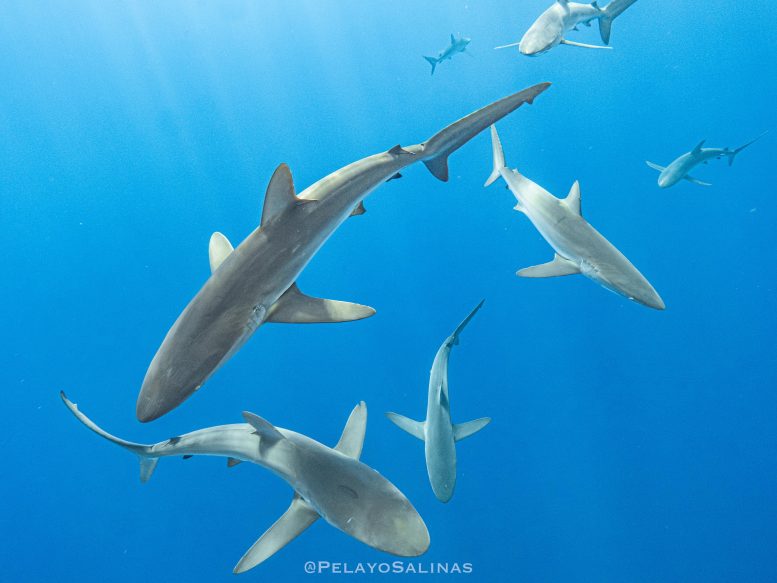
Pelagic sharks are in deep trouble. Once a common sighting around the oceanic islands of the Eastern Tropical Pacific, large shivers of silky sharks are becoming rarer due to ongoing global population declines mainly from overfishing. Credit: Pelayo Salinas de León
“Obtaining shark tracks with good location resolution for over a year is difficult at best. In this case, we were able to track Genie for 1.5 years, revealing unexpectedly consistent, repeated travel pathways of massive distances going far offshore, well beyond national management and current marine protected areas. This finding is a call to action for all stakeholders involved in marine conservation and fisheries management to work together to protect these iconic species and the oceanic ecosystems they inhabit,” adds co-author, Dr. Mahmood Shivji of the SOSF-SRC and GHRI.
Reference: “Longest recorded migration of a silky shark (Carcharhinus falciformis) reveals extensive use of international waters of the Tropical Eastern Pacific” by Pelayo Salinas-de-León, Jeremy Vaudo, Ryan Logan, Jenifer Suarez-Moncada and Mahmood Shivji, 17 May 2024, Journal of Fish Biology.
DOI: 10.1111/jfb.15788

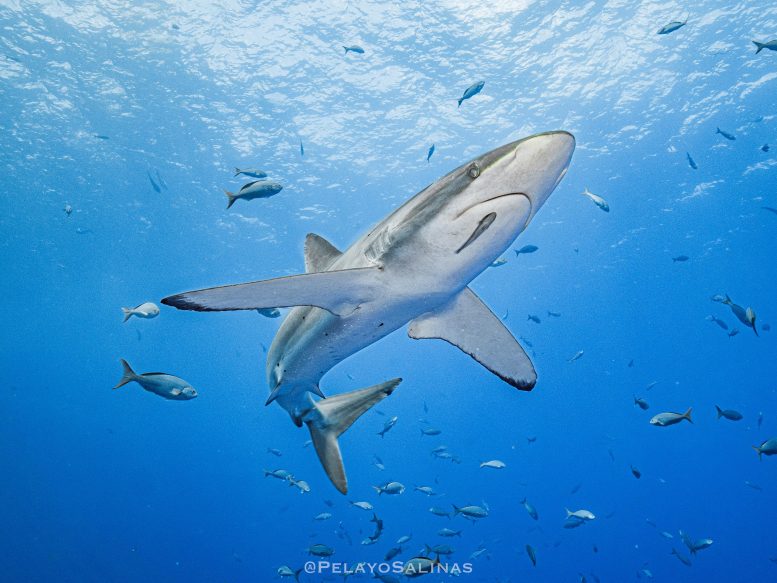








“Four Times the Width of the U.S.”
Something wrong with units like kilometers?
thank you